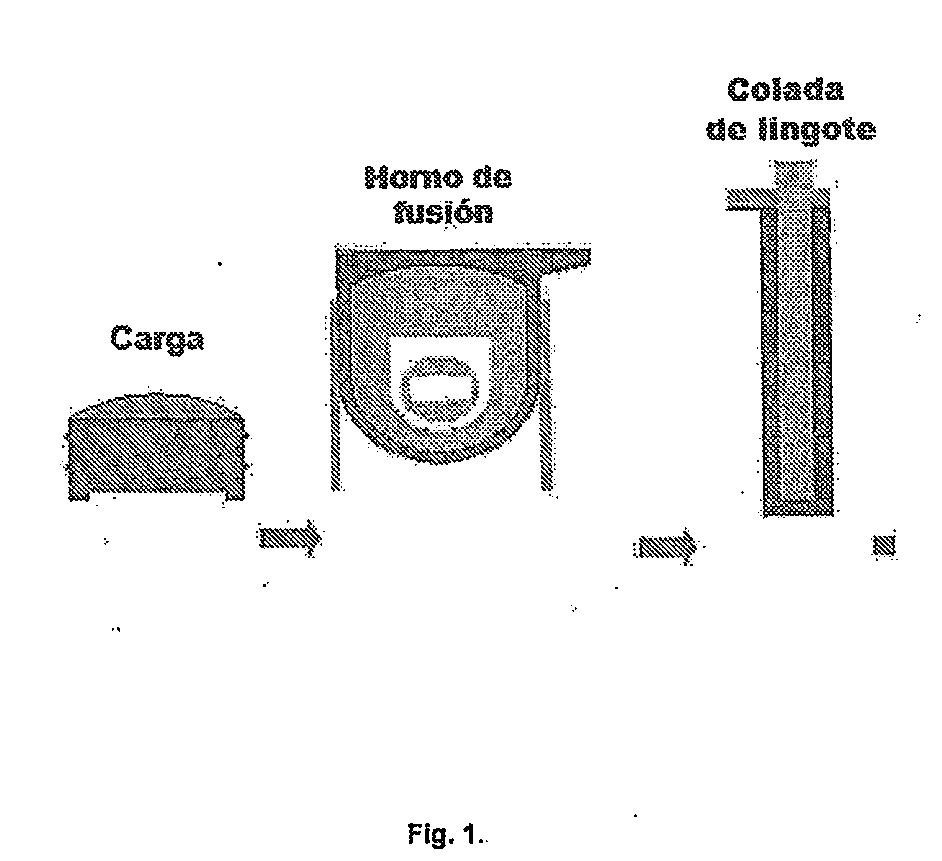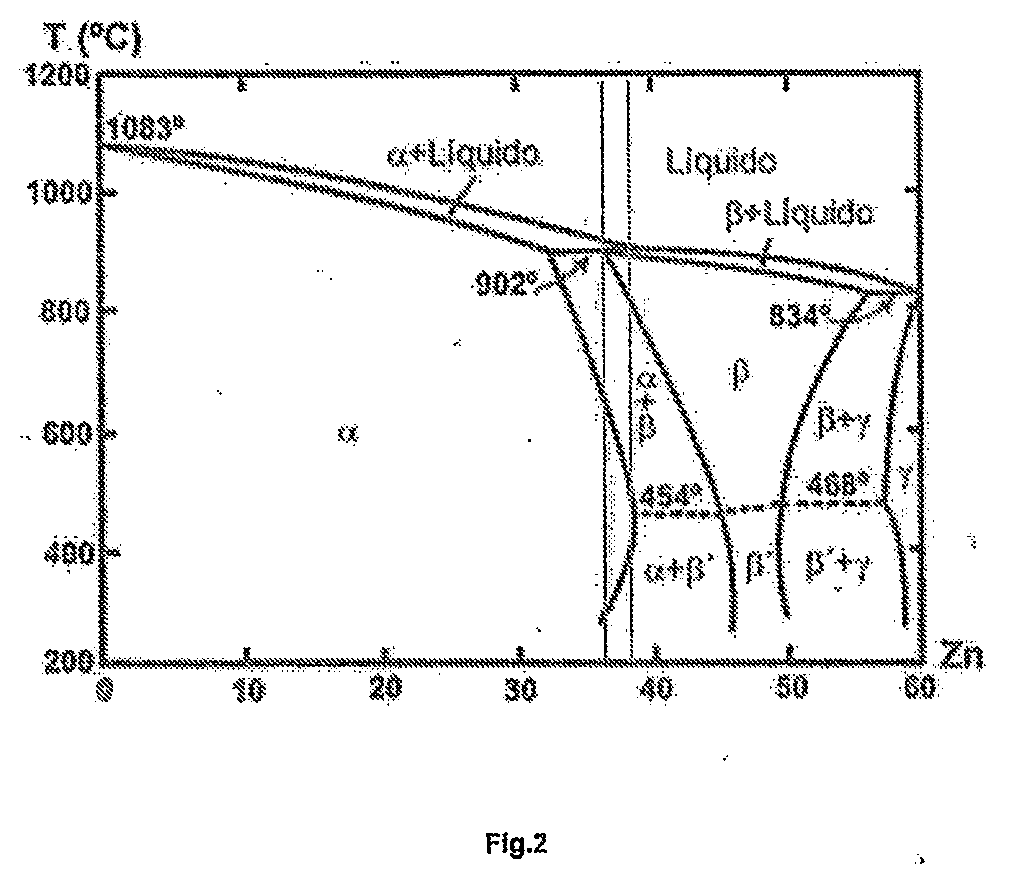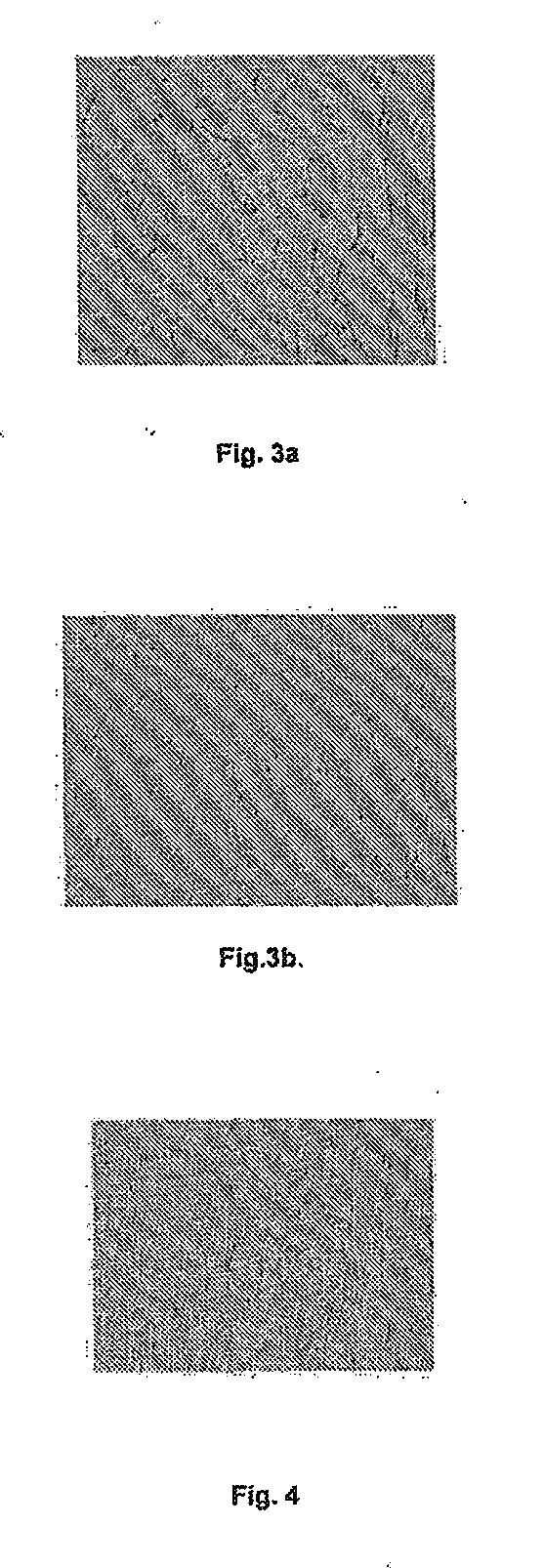Low-Lead Copper Alloys
a low-lead, copper alloy technology, applied in the field of machineable low-lead copper alloys, can solve the problems of machining and finishing problems in the manufacturing process, particularly dangerous for children's mental development, and dangerous compounds in the nervous system
- Summary
- Abstract
- Description
- Claims
- Application Information
AI Technical Summary
Benefits of technology
Problems solved by technology
Method used
Image
Examples
Embodiment Construction
[0026]Developed chemical compounds include, for instance: 62Cu—0.18Pb—0.15Sn—0.03Si—0.10P, alloy C2802-A, and 63Cu—0.24Pb—0.25Sn—0.08Si—0.15P, alloy C2802-B, in which zinc is present in a range between 36% to 38%, which has the purpose of restricting of generated Beta phase in order to have thin bands only (FIG. 3b) and thereby causing a lower deterioration due to the loss of zinc throughout their exposure to ponded, low movement of slightly acids, this dezincification effect is notoriously increased in alloys containing higher Beta phase amounts or thick and interrelated bands (FIG. 3a).
[0027]The amount of lead used is so low that the same perfectly complies with the requirement of the law California AB 1953 in order to be considered as a lead free alloy and be used for the manufacturing of accessories for the conduction of water for human consumption, but at the same time significant, as the machinability of the alloy is increased, which will be of help in the breaking of shavings...
PUM
| Property | Measurement | Unit |
|---|---|---|
| temperature | aaaaa | aaaaa |
| temperature | aaaaa | aaaaa |
| weight | aaaaa | aaaaa |
Abstract
Description
Claims
Application Information
 Login to View More
Login to View More - R&D
- Intellectual Property
- Life Sciences
- Materials
- Tech Scout
- Unparalleled Data Quality
- Higher Quality Content
- 60% Fewer Hallucinations
Browse by: Latest US Patents, China's latest patents, Technical Efficacy Thesaurus, Application Domain, Technology Topic, Popular Technical Reports.
© 2025 PatSnap. All rights reserved.Legal|Privacy policy|Modern Slavery Act Transparency Statement|Sitemap|About US| Contact US: help@patsnap.com



